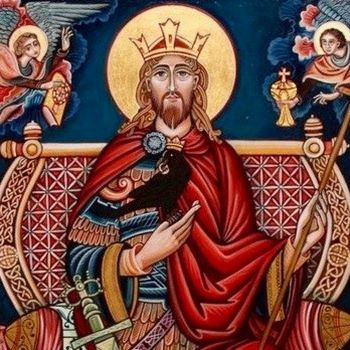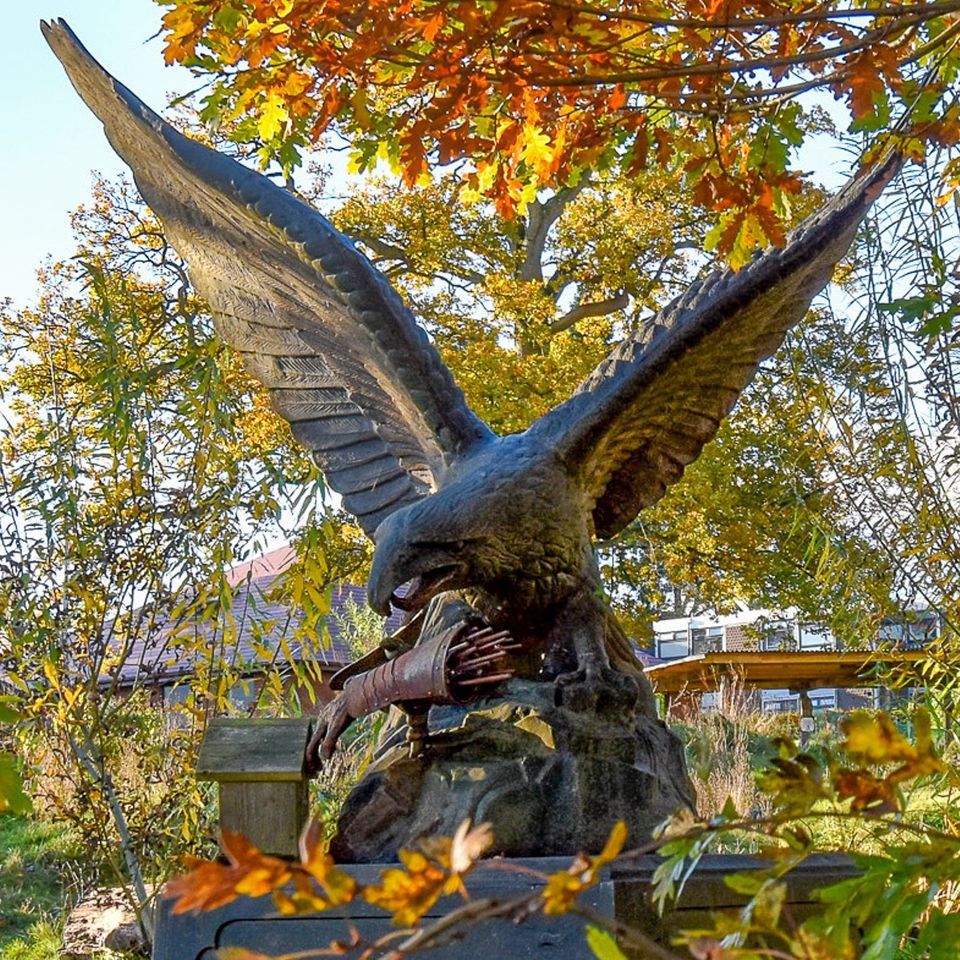Our church is dedicated to St Oswald, King and Martyr. For eight years, he was King of Northumbria, a huge area which stretched from the Humber to the Firth of Forth. During his reign he established Christianity across his kingdom and was instrumental in the conversion of the King of Wessex.
The historian Bede, writing in the early 700s, called Oswald the “Most Christian King” and “Emperor of all Britain” because he united the various tribes under his rule. Oswald was born in 604, the son of Aethelfrith who was said by Bede to have “ravaged the Britons more cruelly than all other English leaders”.
The twelve-year-old Oswald was exiled after his father’s death, by King Edwin, Oswald’s uncle, to the island of Iona at the monastery established by Columba. There he was taught by the monks and baptised into the Celtic Church. He also learnt the art of war and became so skilful that he was known as ‘Whiteblade’.
 After the deaths of both Edwin and Oswald’s elder brother, he returned home to his native Northumberland to reclaim his kingdom. He and the huge forces of Cadwallon met in the Battle of Heavenfield near Hadrian’s Wall. Before the battle Oswald had a dream in which St Columba appeared to him and spread his cloak over the whole realm, promising him victory in the battle.
After the deaths of both Edwin and Oswald’s elder brother, he returned home to his native Northumberland to reclaim his kingdom. He and the huge forces of Cadwallon met in the Battle of Heavenfield near Hadrian’s Wall. Before the battle Oswald had a dream in which St Columba appeared to him and spread his cloak over the whole realm, promising him victory in the battle.
Oswald had his men erect a wooden cross, and prayed to God to “defend us against the pride and fierceness of our enemy, for that God knows our cause is just and that we fight for the salvation of our nations.”
Oswald mounted a surprise dawn attack and Cadwallon and his son were killed in a great victory. Oswald’s first act as king was to establish a monastery on the island of Lindisfarne with the saintly Aidan as his bishop.
Later on, according to Bede, Oswald and Aidan were eating together when a messenger brought in the news that many poor people were asking for alms. Oswald at once ordered the food to be taken out to them, and the silver dish to be broken up and the pieces divided up among them. “The bishop, who was sitting by, was delighted with this pious act, grasped him by the right hand and said, ‘May this hand never wither’”.
In 642 Oswald marched south to confront the pagan King Penda of Mercia in the Battle of Maeserfelth or Maserfield. Oswald was killed, and Penda dragged his body from the field so that his remaining men would not be able to take it home for burial. The body was dismembered and the limbs and head displayed as a pagan sacrifice to Woden, the god of battle.
Oswald’s brother Oswiu returned to the battlefield to find the parts of his body. By that time a “great black bird” is said to have picked up the right arm, flown to a nearby ash tree and dropped it (hence the name “Oswald’s Tree” or Oswestry). Water gushed out, and this became Oswald’s Well, the site of many miracles of healing. The well can still be visited in Maserfield, a short walk from the church. There is a large modern statue of the bird above the well.
picked up the right arm, flown to a nearby ash tree and dropped it (hence the name “Oswald’s Tree” or Oswestry). Water gushed out, and this became Oswald’s Well, the site of many miracles of healing. The well can still be visited in Maserfield, a short walk from the church. There is a large modern statue of the bird above the well.
Oswiu took the head to Lindisfarne, and much later it was placed in the coffin of St Cuthbert in Durham Cathedral. The arms were buried in a silver case in the family fortress in Bamburgh. As Aidan had predicted, they were “incorrupt” at the time of Bede.